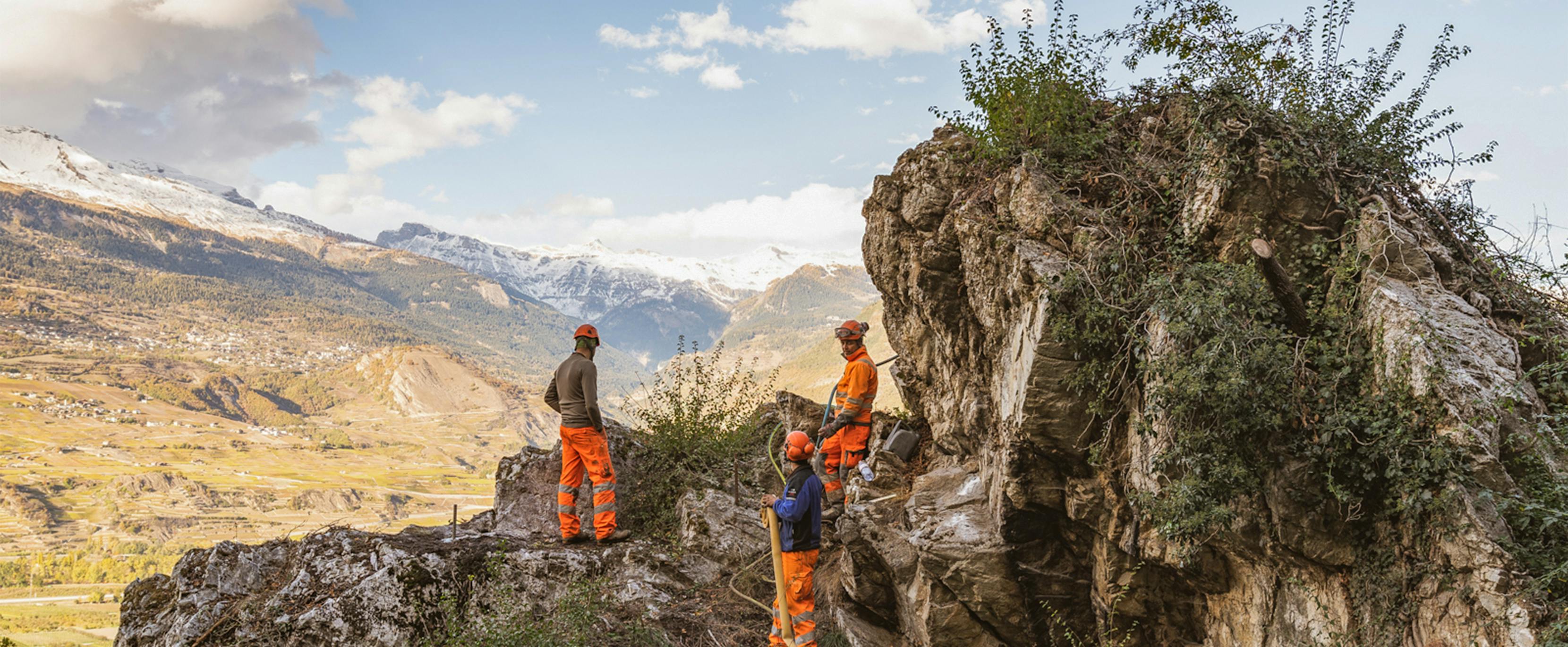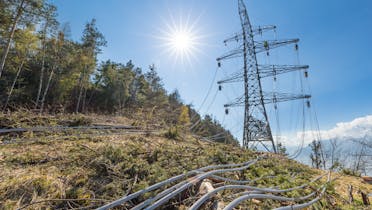
Extra-high-voltage line construction projects take time. On average, 15 years pass between the start of a project and commissioning. In some cases it takes even longer. The Chamoson – Chippis project has broken all the records, running for 36 years. Most of this time was spent on studies, planning, approval processes and, in particular, legal procedures. In contrast, it took only four years to build the line.
It all started in 1986. Energie Ouest Suisse (EOS) announced that it would be extending the extra-high voltage line between Romanel and Chippis. This was to consist of three parts: from the substation in Romanel to Saint-Triphon; from Saint-Triphon to Chamoson; and from Chamoson to Chippis. The first two sections were completed within 12 years. EOS submitted the Chamoson – Chippis line project to the Swiss Federal Inspectorate for Heavy Current Installations (ESTI) in 1997. There were numerous objections, among other things because of the impact on the landscape, which was considered excessive. The federal and cantonal authorities issued decisions against the project, which was suspended.
In June 2002, EOS launched a second attempt. It submitted a new version of the project to the Federal Inspectorate for Heavy Current Installations for approval. In addition to the construction of the two 380 kV lines and the 220 kV line between Chamoson and Chippis, a new aspect of the project was the merging of the 65 kV Valgrid line and the two 132 kV SBB lines on the same pylons. Five years later, the dossier went on to the Swiss Federal Office of Energy (SFOE) as a continuation of the approval procedure. During this period, EOS merged with Atel to become what is now called Alpiq. In 2010, Alpiq received permission to build the overhead line between Chamoson and Chippis. But appeals were lodged against the SFOE’s decision. The proceedings were first brought before the Federal Administrative Court and then the Federal Supreme Court.
The approved overhead line project from 2010 had to be adapted again, and a third version was submitted to the responsible federal authorities. In 2015, the SFOE granted the construction permit to the new owner of the line, Swissgrid. The national grid company had taken over Alpiq’s extra-high-voltage systems in 2013 on the basis of the Electricity Supply Act and continued the Chamoson – Chippis project from then on. This second positive decision in the history of the project was also contested by various opponents. Once again, the case was brought before the Federal Administrative Court and then the Federal Supreme Court. In 2017, the latter confirmed its approval of the permission granted by the SFOE in 2010 and 2015 in the last instance. The construction work for the overhead line between Chamoson and Chippis could begin.
The actual construction of the line happened very quickly compared to the previous studies and proceedings. Over a period of four years, 77 metal pylons were built on a route of 30 km, mainly along the left bank of the Rhône. The new line between Chamoson and Chippis eliminates congestion in the transmission of electricity produced by the Valais hydropower plants. It ensures that energy from the Valais can be transported to the consumption centres on the Swiss Plateau and is therefore of crucial importance for ensuring security of supply in Switzerland. The commissioning of the line does not mean the end of the project. A long chapter in the history of the development of the Swiss EHV grid will only come to an end after the dismantling of 90 km of existing overhead lines between Sierre and Martigny, scheduled to be completed by 2027.











